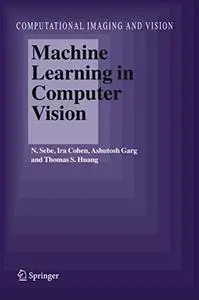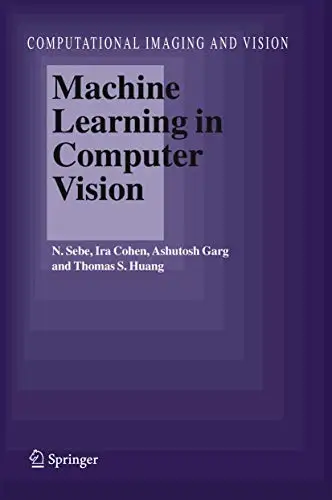Machine Learning in Computer Vision by N. Sebe , Ira Cohen , Ashutosh Garg , Thomas S. Huang
English | PDF (True) | 2005 | 253 Pages | ISBN : 1402032749 | 5.2 MB
It started with image processing in the sixties. Back then, it took ages to digitize a Landsat image and then process it with a mainframe computer. Pro- cessing was inspired on the achievements of signal processing and was still very much oriented towards programming.
In the seventies, image analysis spun off combining image measurement with statistical pattern recognition. Slowly, computational methods detached themselves from the sensor and the goal to become more generally applicable. In the eighties, model-driven computer vision originated when artificial in- telligence and geometric modelling came together with image analysis compo- nents. The emphasis was on precise analysis with little or no interaction, still very much an art evaluated by visual appeal. The main bottleneck was in the amount of data using an average of 5 to 50 pictures to illustrate the point.
At the beginning of the nineties, vision became available to many with the advent of sufficiently fast PCs. The Internet revealed the interest of the gen- eral public im images, eventually introducing content-based image retrieval. Combining independent (informal) archives, as the web is, urges for interac- tive evaluation of approximate results and hence weak algorithms and their combination in weak classifiers.
In the new century, the last analog bastion was taken. In a few years, sen- sors have become all digital. Archives will soon follow. As a consequence of this change in the basic conditions datasets will overflow. Computer vision will spin off a new branch to be called something like archive-based or se- mantic vision including a role for formal knowledge description in an ontology equipped with detectors. An alternative view is experience-based or cognitive vision. This is mostly a data-driven view on vision and includes the elementary laws of image formation.
Without You And Your Support We Can’t Continue
Thanks For Buying Premium From My Links For Support
Thanks For Buying Premium From My Links For Support



